I've been gifted a deckle and mould (yeah, I know!!!) which is a piece of paper making equipment.
It's not for sale and never will be (BECAUSE I LOVE IT!!!!) but I thought it'd be an opportunity to show it and share it with you and explain what it does if you don't already know. For those of you that do know, hope you enjoy the pics!
This is a pretty big deckle and mould (1175 x 450 mm). It's a piece of equipment used to make paper by hand.
A deckle and mould is a wooden frame with a metal mesh bed.

From the serial number on the mould we can see when it was manufactured: September 1916. W&R Balston the company who made Whatman paper would update their moulds to show the year the paper was made - in this case, 1936.
The metal bar between the watermarks creates a pseudo watermark on the sheets which allows the paper to be easily torn in half by the mill workers to create 4 sheets of paper in total.

This mould made two full sheets of paper at the same time hence the wooden bar in the middle dividing them from one another.
Watermarks or countermarks read "J Whatman", "HANDMADE", "1936" and "ENGLAND". There are four repeats of the same watermarks as this mould makes two individual sheets which can then be torn in half to create four sheets in total.
Here's an example of a very similar watermark but from 1858. Note that this one doesn't state handmade as all Whatman paper in the 1800s were handmade. Later papers were handmade or mould-made.
Mould-made paper is a machine process meant to emulate some qualities of a handmade sheet but without the expense or skills required.

Note the tiny holes in the mesh through which excess water drips back into the tub of water and paper pulp. Also note the beautiful brasswork. These moulds would have been used to make thousands of sheets and so they needed to be very well made.
HOW IT WORKS (very basically)
The deckle and mould is dipped into a vat of water and paper pulp.
When it's lifted out of the pulp/water mixture, some of the water drains through the tiny holes in the mesh and what's left over forms into a very wet sheet which is then placed onto a felt blanket.
This process is repeated time and time again until there's a great big pile of wet sheets which are then placed under a hydraulic or screw press where lots more water is squeezed out.
The sheets are then dried (in various ways including hanging up in a loft). When the remainder of the water has evaporated you have paper.
A good paper maker can make pretty much the same sheet of paper (the same thickness/weight) time and time again.
A bad paper maker (like me) can't.


Leave a comment